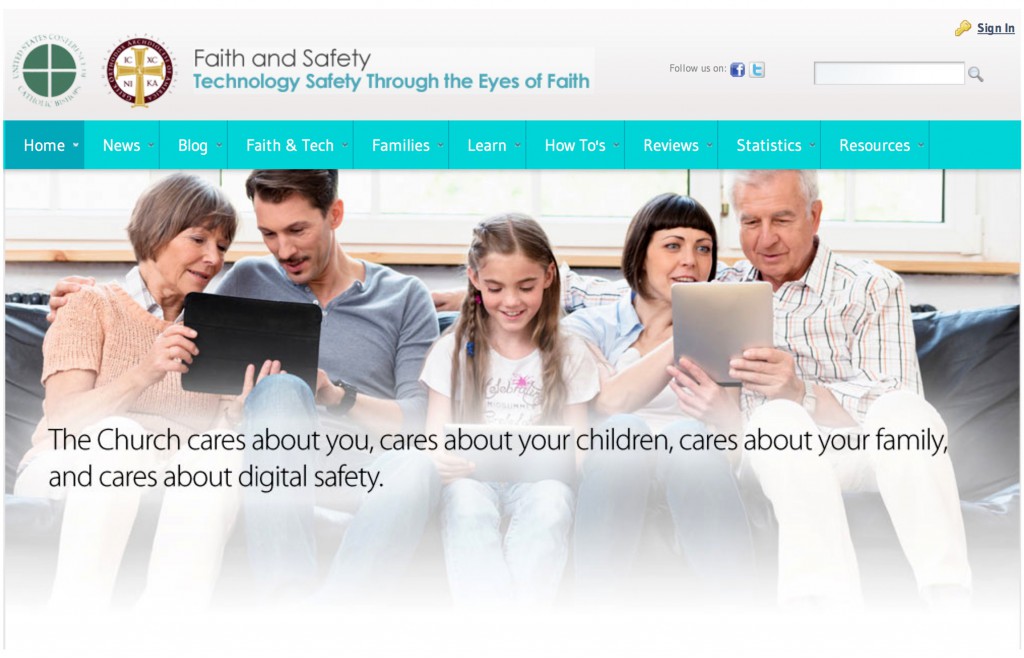
By Mark Pattison
Roman Catholics and Greek Orthodox in the United States have collaborated on a new website to instruct Web users, primarily parents, on how youths can navigate the online world, taking advantage of its promise while steering away from its pitfalls.
The site, www.faithandsafety.org, was activated in the middle of June, which is Internet Safety Month. The site’s subtitle is “Technology Safety Through the Eyes of Faith.”
Even in its first days, it is loaded with news about sites that teens use, eyebrow-raising details about children’s first exposure to online pornography, suggestions on how to use technology safely at home, and tips on negotiating the mobile-app scene.
The site was two years in the making. Its genesis was during a brainstorming session as part of a summit meeting of the Religious Alliance Against Pornography attended by Catholic and Greek Orthodox leaders.
“We were challenged to come up with actionable items as a result of the summit,” said Theo Nicolakis, chief information officer for the Greek Orthodox Church in the United States. “One of the items I came up with was that we were going to come up with an initiative that would give the voice of faith in regard to online and technological safety.”
“It’s primary audience is intended to be parents and others who are concerned about children’s digital safety,” said Helen Osman, secretary of communications for the U.S. bishops, adding the Catholic Communication Campaign helped bring FaithAndSafety to launch with grant funding.
“It’s intended to honor the idea that parents are probably the best ones to understand new areas. It focuses a lot on helping them understand this world where their kids are more comfortable that they are but they really need to be there to help their children understand the potential and also the risk: how to you deal with bullying, how to you deal with pornography.”
Osman said, “We try to provide some of the technical advice but also provide it through the understanding that Catholic teaching, the Greek Orthodox teaching is that all of creation is good.”
Nicolakis said the process of launching FaithAndSafety was “a herculean effort that took almost two years from the point of conception until today: identifying what the hot-button topics are going to be, finding strategic partners with common areas of interest, being able to build out the technology on the web and allow the platform to move forward.”
FaithAndSafety is also on Facebook and Twitter.
To keep the site fresh, “we’re trying right now to expand our partnerships,” Nicolakis said. “We don’t pretend that we’re going to be experts in every area. We want to be a good clearinghouse of info for experts in particular areas.”
The site has also engaged a slew of bloggers and commentators to weigh in on current events. Among them are Bishop John C. Wester of Salt Lake City, chairman of the bishops’ Communications Committee and Auxiliary Bishop Christopher J. Coyne of Indianapolis, another committee member.
FaithAndSafety will be shown to audiences later in June at the Catholic Media Convention in Denver, and at the “Theology and Communication in Dialogue” conference in Santa Clara, Calif., jointly sponsored by the U.S. bishops and the Pontifical Council for Social Communications.
Nicolakis said he would be happy if other denominations wanted to join with the Catholic and Orthodox churches in building up the website. The current collaboration, though, has been “wonderful,” he added. “I don’t think I’ve ever been in a partnership that’s ever been so open and wonderful.” – CNS